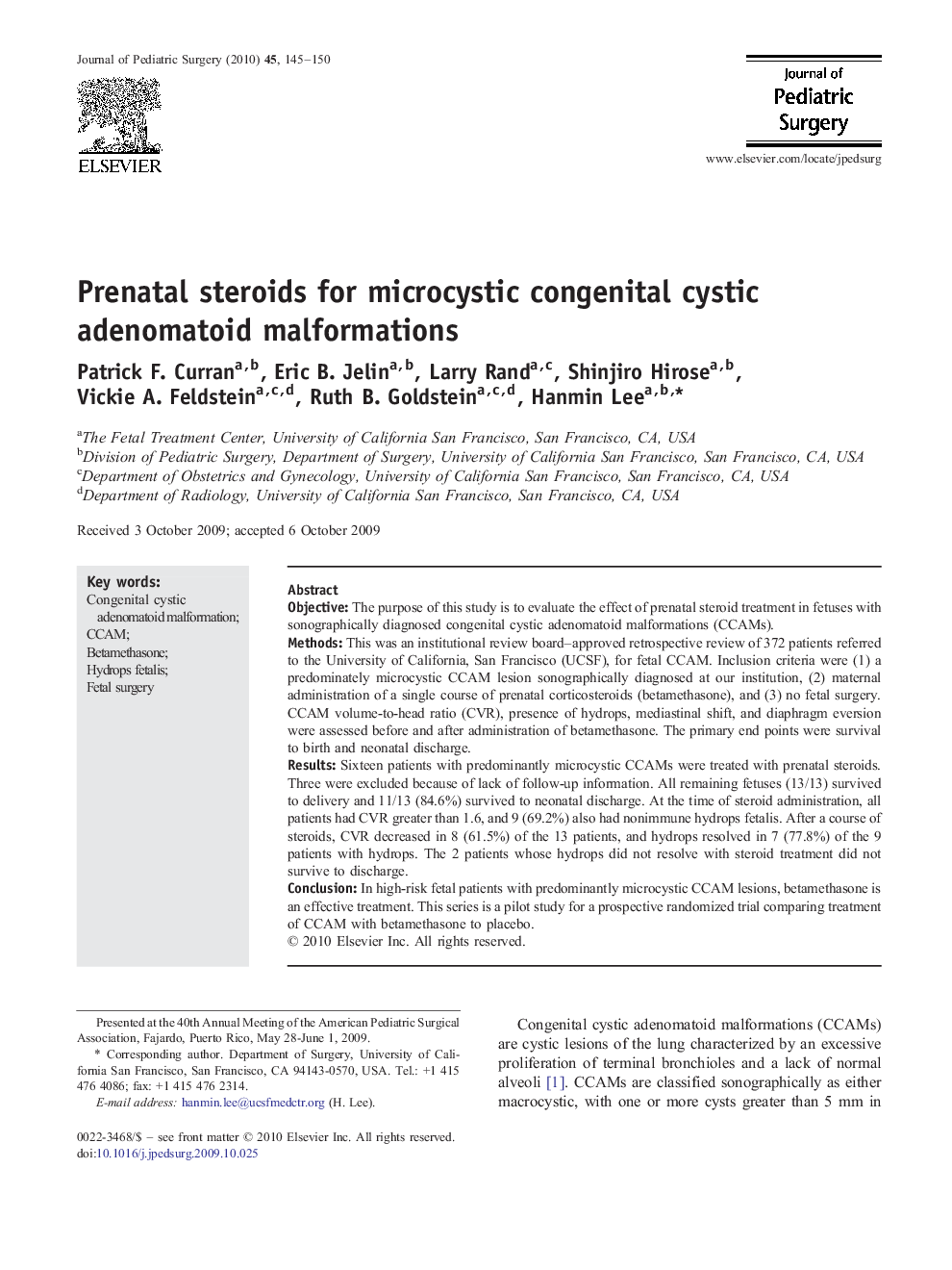| Article ID | Journal | Published Year | Pages | File Type |
|---|---|---|---|---|
| 4158807 | Journal of Pediatric Surgery | 2010 | 6 Pages |
ObjectiveThe purpose of this study is to evaluate the effect of prenatal steroid treatment in fetuses with sonographically diagnosed congenital cystic adenomatoid malformations (CCAMs).MethodsThis was an institutional review board–approved retrospective review of 372 patients referred to the University of California, San Francisco (UCSF), for fetal CCAM. Inclusion criteria were (1) a predominately microcystic CCAM lesion sonographically diagnosed at our institution, (2) maternal administration of a single course of prenatal corticosteroids (betamethasone), and (3) no fetal surgery. CCAM volume-to-head ratio (CVR), presence of hydrops, mediastinal shift, and diaphragm eversion were assessed before and after administration of betamethasone. The primary end points were survival to birth and neonatal discharge.ResultsSixteen patients with predominantly microcystic CCAMs were treated with prenatal steroids. Three were excluded because of lack of follow-up information. All remaining fetuses (13/13) survived to delivery and 11/13 (84.6%) survived to neonatal discharge. At the time of steroid administration, all patients had CVR greater than 1.6, and 9 (69.2%) also had nonimmune hydrops fetalis. After a course of steroids, CVR decreased in 8 (61.5%) of the 13 patients, and hydrops resolved in 7 (77.8%) of the 9 patients with hydrops. The 2 patients whose hydrops did not resolve with steroid treatment did not survive to discharge.ConclusionIn high-risk fetal patients with predominantly microcystic CCAM lesions, betamethasone is an effective treatment. This series is a pilot study for a prospective randomized trial comparing treatment of CCAM with betamethasone to placebo.
